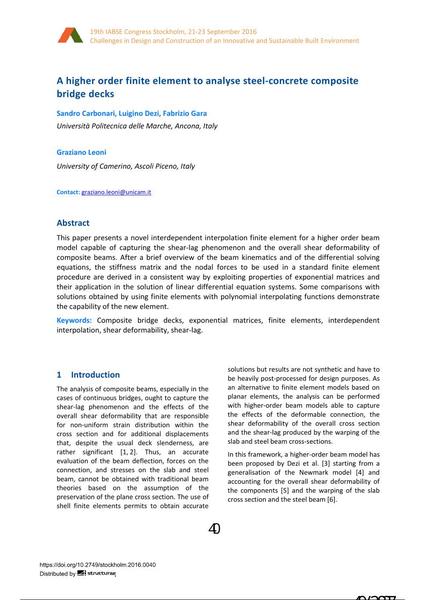A higher order finite element to analyse steel-concrete composite bridge decks

|
|
|||||||||||
Bibliografische Angaben
| Autor(en): |
Sandro Carbonari
(Università Politecnica delle Marche, Ancona, Italy)
Luigino Dezi Fabrizio Gara (Università Politecnica delle Marche, Ancona, Italy) Graziano Leoni |
||||
|---|---|---|---|---|---|
| Medium: | Tagungsbeitrag | ||||
| Sprache(n): | Englisch | ||||
| Tagung: | IABSE Congress: Challenges in Design and Construction of an Innovative and Sustainable Built Environment, Stockholm, Sweden, 21-23 September 2016 | ||||
| Veröffentlicht in: | IABSE Congress Stockholm, 2016 | ||||
|
|||||
| Seite(n): | 40-47 | ||||
| Anzahl der Seiten (im PDF): | 8 | ||||
| Jahr: | 2016 | ||||
| DOI: | 10.2749/stockholm.2016.0040 | ||||
| Abstrakt: |
This paper presents a novel interdependent interpolation finite element for a higher order beam model capable of capturing the shear-lag phenomenon and the overall shear deformability of composite beams. After a brief overview of the beam kinematics and of the differential solving equations, the stiffness matrix and the nodal forces to be used in a standard finite element procedure are derived in a consistent way by exploiting properties of exponential matrices and their application in the solution of linear differential equation systems. Some comparisons with solutions obtained by using finite elements with polynomial interpolating functions demonstrate the capability of the new element. |
||||
| Stichwörter: |
finite Elemente
|
||||

